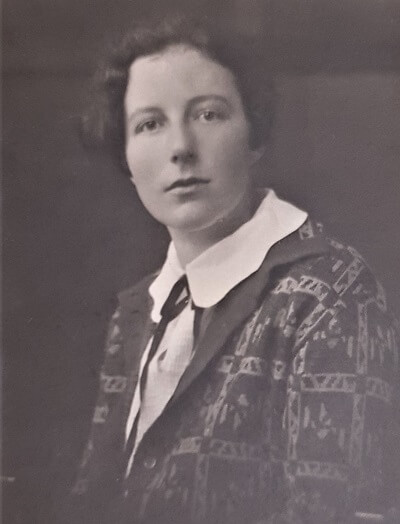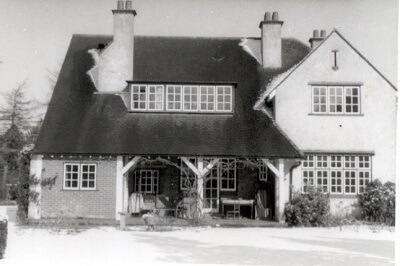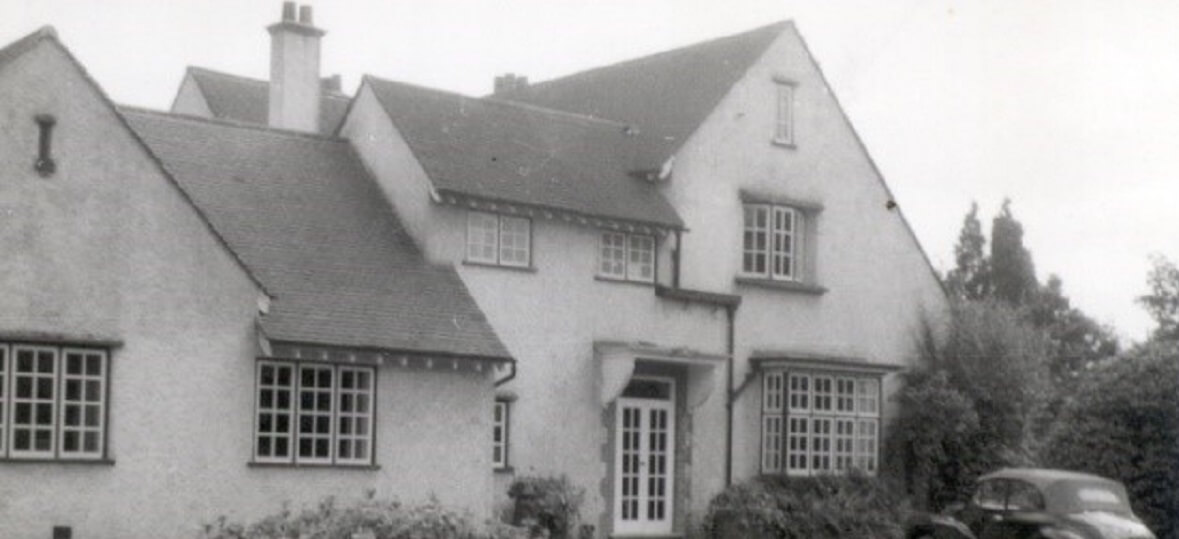How one Amersham woman helped orphans and refugees during WWII
by Alison Bailey
Margery Abrahams (1896-1983) MA(Oxon) MSc(Columbia University)

Today Abrahams Close, off Lincoln Park, is the only reminder of an extraordinary woman who helped many during WWII. Margery Abrahams, who lived here for over 80 years was a pioneering dietitian at St Barts Hospital. In addition to finding local accommodation for evacuees and refugees, she also helped nationally to organise the Kindertransport. This was a scheme to rescue unaccompanied children from Nazi-controlled territory in the months before the outbreak of war. After the government waived visa requirements, nearly 10,000 children were brought to the UK and placed in foster homes, schools, and hostels. Often, they were the only members of their families who survived the Holocaust.
Margery called on the funds and support of her many influential friends here and in America to help the rescue effort. These friends included Benjamin Cohen, a key figure in the administration of Franklin D. Roosevelt. But Margery also welcomed refugees into her own home, including 15-year-old Dorothea Back. After escaping Czechoslovakia on the Kindertransport, Dorothea was fostered by Margery and her extended family.
In 1939 the household also included a German doctor, Guido Goldschmidt, a widow, Bella Dubrova, and the Gurney family. Ivy Gurney was Margery’s closest friend. They met at Somerville College, Oxford and Ivy lived at Chilterns with her parents and two nieces. The young girls were being cared for by Margery and Ivy after the breakdown of their parents’ marriage. Margery owned a neighbouring house, Sunnycorner, which in 1939, was occupied by around 20 orphans, their foster mother, Winifred Macdonald and a nurse.
Family
It was perhaps Margery’s own experience of being orphaned young which made her so empathetic to the plight of children. Margery was born in 1896, the only child of Jane Simmons and Dr Bertram Abrahams who had a consulting practice and home in Welbeck Street. The Abrahams and Simmons families were prosperous Jewish families who had lived in Britain for many generations. Jane’s father established a theatrical costumiers, in Piccadilly which later became an important fashion house, John Simmons & Sons.
Chilterns

After their marriage at the Bayswater Synagogue in 1896, the Abrahams rented a house on Amersham Common as an escape from London as Jane often visited Amersham to walk in the Chilterns with friends. She soon convinced her husband that they needed their own house and purchased around 16 acres of land off White Lion Road. Here they built a grand Arts & Crafts house, Chilterns, set back down a long drive to take advantage of the lovely views across the Misbourne valley. The family became an important part of the local community entering all the local horticultural shows and winning many prizes and cups.
Margery’s father died in 1908 age 38, after suffering for many years from a chronic kidney disease. Jane and Margery continued to live at Welbeck Street and at Chilterns with a Swiss governess, Martha Jenger, and several servants. Tragically Margery became an orphan four years later, following her mother’s death, when she was just 14.

Margery’s uncle, John Simmons (Jane’s younger brother), then made Chilterns his principal residence so that could provide Margery with a secure home, whilst she continued with her education. After Oxford, Margery trained as a dietitian, mainly in America and Canada where the science of nutrition was more advanced. She obtained a MSc from Columbia University, New York. American immigration records tell us that Margery was 5ft 6” tall with green eyes and dark brown hair, and that she spoke French and German!
For many years Margery was the dietitian at St Barts Hospital. She published several books and was the first chairman of the British Dietetic Association when it was formed in 1936. Co-written with Dr Elsie Widdowson, her book Modern Dietary Treatment, published in 1937, included revolutionary developments in food analysis and dietary principals for treating different medical conditions.
John Simmons

Uncle John, who was also independently wealthy and a talented artist, was a founding member of the Bucks Art Society. He established a large studio at Chilterns where he hosted cultural events, such as lectures and concerts. John married Dr Margery Freeborough, in 1930 and built another large house, New Chilterns, in the grounds of Chilterns, as his family home. The drive was lined with lime trees and was later known as Chiltern Drive and is now Lime Tree Walk.
Sharing Margery’s sympathy for the plight of refugees, John founded the Chesham, Amersham and District Refugee Fund. Other committee members included Reverend Briggs of St Marys, Amersham and Lady Olive Astley Cubbitt of Bendrose Grange. In their 1939 June report, they were supporting 12 people, mainly from Vienna, in two rented houses in Ashley Green and Chesham at a cost of £6 per week. The committee made an appeal for financial support and offers of private hospitality as they had been approached by the British Committee for Refugees from Czechoslovakia and other organisations for assistance.
After WWII
After the war Margery continued to support Dorothea and Ivy’s nieces, Jennifer, and Judy, providing a home for them at Chilterns. Dorothea followed Margery to Oxford University before working in publishing in London. Jennifer became a teacher and Judy qualified as a doctor. The girls called Margery “Miss Dear” and stayed very close to her all their lives. When they married, Margery welcomed their husbands into the extended family and helped each of them purchase their first house.
In the 1960s and 70s Margery sold some of the estate land for the development of Lincoln Park and Amersham College. New Chilterns was sold after Margery Simmons moved to Little Missenden in the 60s (John had died in 1943). Margery eventually sold Chilterns to Bucks County Council (with a lifetime interest) so it could be adapted and used by the adjoining college after her death. This didn’t happen when Margery died in 1983. Sadly, the council allowed the house to deteriorate to such an extent that it was eventually demolished around 1990. Sunnycorner was also demolished and the site redeveloped. New Chilterns was initially developed into six flats but was demolished and the site redeveloped in 2007. Little remains of the Abrahams’ country estate apart from the mature trees of Lincoln Park and Abraham Close, but the achievements and compassion of this woman should be remembered by the town today.
Sources
John Simmons (1871-1943): Artist by Alexander Simmons, History of Art Dissertation
Dictynna Hood, John Simmons’ granddaughter
Monica Mullins
Ancestry.com
British Newspaper Archive
New Chilterns by John Simmons, son of John Simmons the artist
Life after Death by Dorothea Wallis
Benjamin V. Cohen: Architect of the New Deal by William Lasser
Going Forward (by looking back to dietetics in the 1930s) by Ursula Arens and Dr Margaret Ashwell, NHDmag.com, Issue 113 April 2016
Amersham in the last 100 Years Exhibition file, letter dated 26 January 2005 from David Tench, and a summary of interviews with Margery Abrahams in 1977 and 1979, Amersham Museum collection

